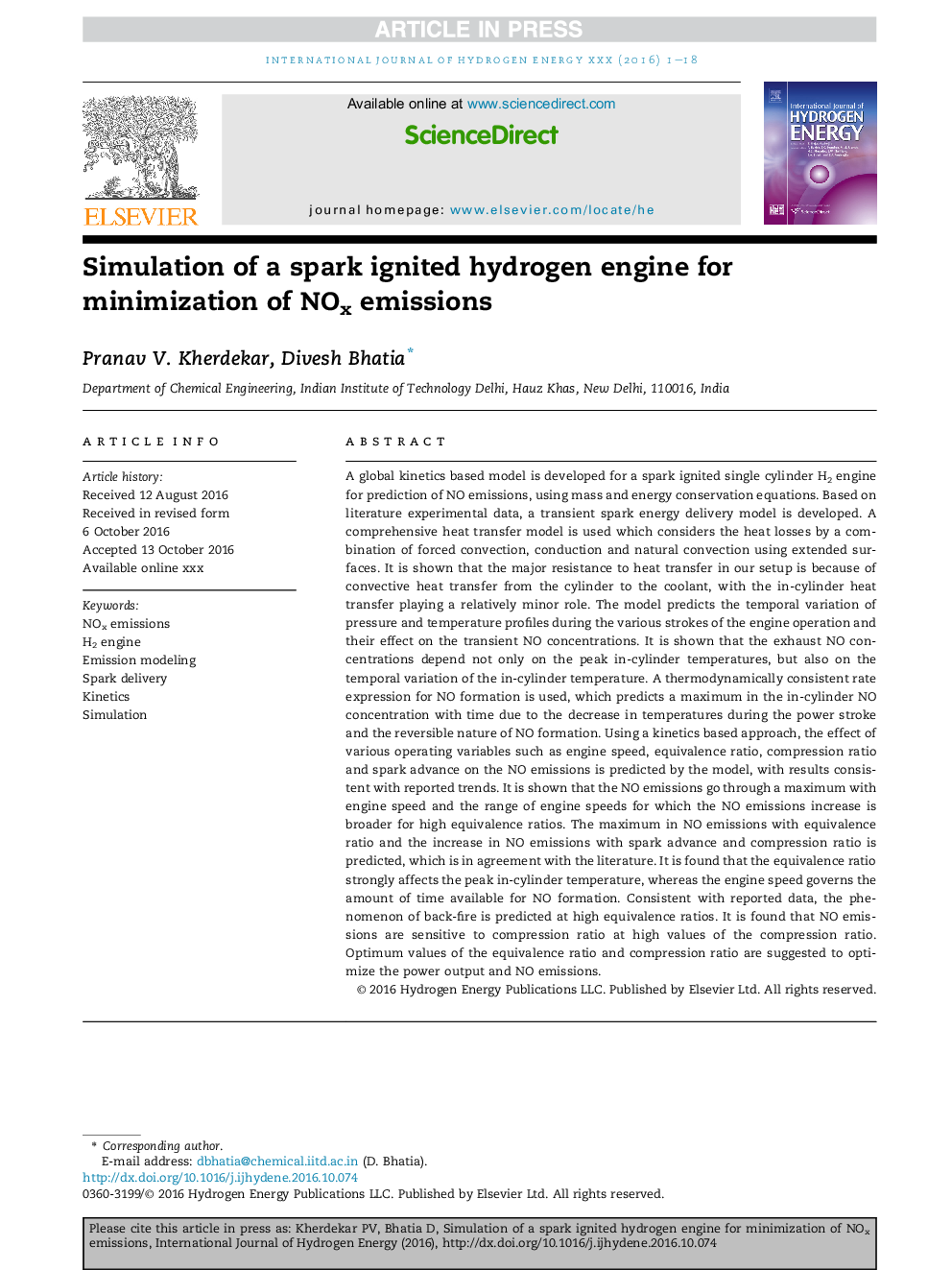| کد مقاله | کد نشریه | سال انتشار | مقاله انگلیسی | نسخه تمام متن |
|---|---|---|---|---|
| 5146373 | 1497370 | 2017 | 18 صفحه PDF | دانلود رایگان |
عنوان انگلیسی مقاله ISI
Simulation of a spark ignited hydrogen engine for minimization of NOx emissions
دانلود مقاله + سفارش ترجمه
دانلود مقاله ISI انگلیسی
رایگان برای ایرانیان
کلمات کلیدی
موضوعات مرتبط
مهندسی و علوم پایه
شیمی
الکتروشیمی
پیش نمایش صفحه اول مقاله

چکیده انگلیسی
A global kinetics based model is developed for a spark ignited single cylinder H2 engine for prediction of NO emissions, using mass and energy conservation equations. Based on literature experimental data, a transient spark energy delivery model is developed. A comprehensive heat transfer model is used which considers the heat losses by a combination of forced convection, conduction and natural convection using extended surfaces. It is shown that the major resistance to heat transfer in our setup is because of convective heat transfer from the cylinder to the coolant, with the in-cylinder heat transfer playing a relatively minor role. The model predicts the temporal variation of pressure and temperature profiles during the various strokes of the engine operation and their effect on the transient NO concentrations. It is shown that the exhaust NO concentrations depend not only on the peak in-cylinder temperatures, but also on the temporal variation of the in-cylinder temperature. A thermodynamically consistent rate expression for NO formation is used, which predicts a maximum in the in-cylinder NO concentration with time due to the decrease in temperatures during the power stroke and the reversible nature of NO formation. Using a kinetics based approach, the effect of various operating variables such as engine speed, equivalence ratio, compression ratio and spark advance on the NO emissions is predicted by the model, with results consistent with reported trends. It is shown that the NO emissions go through a maximum with engine speed and the range of engine speeds for which the NO emissions increase is broader for high equivalence ratios. The maximum in NO emissions with equivalence ratio and the increase in NO emissions with spark advance and compression ratio is predicted, which is in agreement with the literature. It is found that the equivalence ratio strongly affects the peak in-cylinder temperature, whereas the engine speed governs the amount of time available for NO formation. Consistent with reported data, the phenomenon of back-fire is predicted at high equivalence ratios. It is found that NO emissions are sensitive to compression ratio at high values of the compression ratio. Optimum values of the equivalence ratio and compression ratio are suggested to optimize the power output and NO emissions.
ناشر
Database: Elsevier - ScienceDirect (ساینس دایرکت)
Journal: International Journal of Hydrogen Energy - Volume 42, Issue 7, 16 February 2017, Pages 4579-4596
Journal: International Journal of Hydrogen Energy - Volume 42, Issue 7, 16 February 2017, Pages 4579-4596
نویسندگان
Pranav V. Kherdekar, Divesh Bhatia,